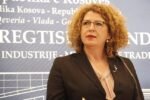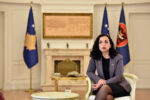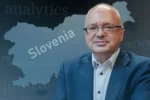What began as mourning has turned into a movement. The collapse of a canopy at the newly renovated Novi Sad railway station which claimed 16 lives has become a defining symbol of Serbia’s deep-rooted corruption and institutional decay.
Tens of thousands of citizens, students, and war veterans filled the streets of Novi Sad to demand justice for the victims but their message stretched far beyond that tragedy. It was a direct challenge to the rule of President Aleksandar Vučić, whose decade-long grip on power now faces the most serious test yet.
According to European Justice, more than 40,000 protesters from 60 cities gathered on November 1st, while independent observers say the real number was nearly double. The government’s reaction was as telling as it was desperate: denying permits for stages, cutting off water supplies, and even suspending train services under the pretext of a bomb threat.
Every administrative obstacle was meant to suppress the voices of dissent. Yet, the opposite occurred. Citizens of Belgrade, Inđija, and Novi Sad opened their homes to protesters, proving that solidarity in Serbia runs deeper than state intimidation. Students walked 90 kilometers from Belgrade to Novi Sad, transforming their march into a national act of defiance and hope.
The rally did not mirror the revolutionary spirit of October 5, 2000, which ended Slobodan Milošević’s rule. But it sent an equally powerful warning — that Vučić’s authority, built on fear, control, and media manipulation, is no longer unshakable.
Public fatigue with his autocratic style of governance is growing, and so is the belief that Serbia’s future must be decided through free, democratic elections — not fear and propaganda. By law, Vučić cannot seek a third term, yet his attempts to consolidate power continue, while the opposition, civic movements, and student organizations explore the possibility of uniting under a common reformist platform.
Meanwhile, external influences cast a shadow over the domestic scene. Moscow, wary of a Serbian “Maidan,” has intensified its soft power, even opening a “Russian Historical Society” in Belgrade — led by Sergey Naryshkin, head of Russia’s foreign intelligence service.
Yet perhaps the most important outcome of this year of protests is psychological. The wall of fear that once silenced ordinary citizens is crumbling. Across Serbia, people are realizing that demanding accountability is not treason — it is democracy.
Vučić’s Serbia stands at a crossroads. The regime’s reflexes of control are colliding with a society that has found its voice. What happens next will determine whether Serbia continues its slide into authoritarian stagnation — or finally reclaims its democratic promise.







